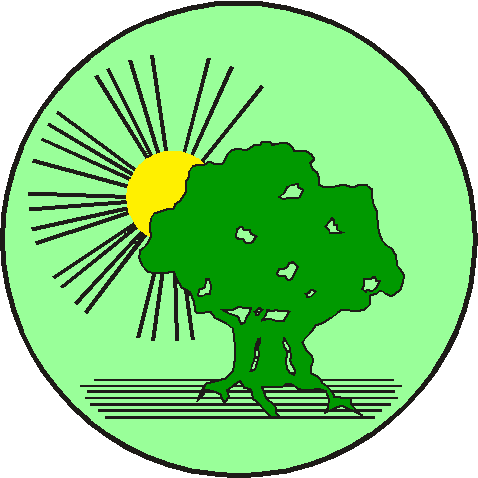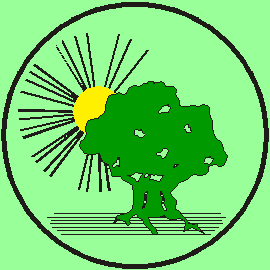O. Earlier Movements for Change
In this Chapter:
- Study Questions
- Overview Article O
- Reading Set O1: Social Movements in Pre-WWI Europe and Asia
- Reading Set O2: U.S. Abolitionism and Women’s Suffrage Movements
- Reading Set O3: U.S. Labor and Economic Justice Movements
- Reading Set O4: U.S. Populist, Progressive, and Socialist Movements
- Reading Set O5: Conservation, Peace, and Human Rights Movements
- Additional Resources
The history of early progressive movements is fascinating and instructive.
Study Questions
- History includes only certain stories and leaves out quite a lot. What does the history of progressive change movements leave out?
- Are current movements for positive social change larger or smaller (more effective or less effective) than movements in the past?
- Are current activists more grounded, flakey, fanatical, responsible, outrageous, or calm than activists in the past?
Overview Article O
11 pages total
“The Missing Voices of Our World,” by Howard Zinn, Tomdispatch.com, November 17, 2004, 11 p.
http://www.alternet.org/story/20517/the_missing_voices_of_our_world
History books usually don’t include minority perspectives or information about people’s struggles. Whenever injustices have been remedied, wars halted, women and blacks and Native Americans given their due, it has been because “unimportant” people spoke up, organized, protested, and brought democracy alive.
Reading Set O1: Social Movements in Pre-WWI Europe and Asia
68 pages total
“The Paris Commune of 1871,” by Norman Barth, Paris Kiosque, May 2001, Volume 8, Number 5, 8 p.
http://www.paris.org/Kiosque/may01/commune.html No longer available here.
A brief description of the Paris Commune, 1871.
“Paris Commune,” Wikipedia (accessed July 7, 2010), 17 p.
http://en.wikipedia.org/w/index.php?title=Paris_Commune&oldid=369980537
A description of the Paris Commune, 1871.
“Rosa Luxemburg: A life inspired,” UK Socialist Party, 5 p.
http://www.socialistparty.org.uk/socialistwomen/sw11.htm
A short history of the workers’ movement in Germany and Russia before WWI in the context of Rosa Luxemburg’s life. More about Luxemburg and her thinking than the movement as a whole.
“Rosa Luxemburg and German Social Democracy,” by Ernest Mandel, translated by Val Graham and Fred LePlat, International Viewpoint, Fourth International, 31 p.
http://www.ernestmandel.org/en/works/txt/1971/rosa_luxemburg.htm
or
http://www.marxists.org/archive/mandel/1971/xx/rl-gersd.htm
Luxemburg argued that it was completely insufficient for victory merely to have built a powerful socialist organisation. What was needed was an organisation whose programme and whose daily use of it to intervene in the class struggle would ensure that on the day of the revolution the party would be the driving force of the proletariat and not its bureaucratic hangman. Dense long leftist analysis of pre-WWI European socialism.
“Mahatma Gandhi’s Unfinished Work,” by James Carroll, Boston Globe, October 2, 2001, 3 p.
http://www.commondreams.org/views01/1002-05.htm
Gandhi’s accomplishments and legacy.
“A Muslim Gandhi? Badshah Khan and the World’s First Nonviolent Army,” by Tim Flinders, PeacePower, Volume 1, Issue 1, Summer 2005, 4 p.
http://www.calpeacepower.org/0101/muslim_ghandi.htm
Muslim Badshah Khan based his life and work on the profound principle of nonviolence, raising an army of courageous men and women who translated it into action and showed that nonviolence has the power to resolve conflicts even against heavy odds.
Reading Set O2: U.S. Abolitionism and Women’s Suffrage Movements
58 pages total
“A Brief History of the American Abolitionist Movement,” by John R. McKivigan, History Department, Indiana University-Purdue University, Indianapolis, 8 p.
http://americanabolitionist.liberalarts.iupui.edu/brief.htm
The combined influence of the Garrisonians, the religious abolitionists, and the political abolitionists helped provoke sectionalism and Southern secession in 1861. The secession of the Southern states led most religious denominations to acknowledge the moral corruption of slaveholding and to endorse emancipation. During the Civil War, political abolitionists and Garrisonians rallied Northern public pressure, forcing President Abraham Lincoln to adopt emancipation as a war goal. Good general overview of Abolition Movement.
“Antislavery Before the Revolutionary War,” by Sylvia R. Frey, HistoryNow, Issue 5, September 2005, 9 p.
http://www.gilderlehrman.org/history-by-era/origins-slavery/essays/anti-slavery-before-revolutionary-war Free subscription required.
The modern intellectual antislavery movement emerged as two distinct but overlapping currents, one religious, the other secular. The earliest protest on record is the 1688 Germantown petition signed by four German Quakers and Mennonites.
“The Idea That Brought Slavery to Its Knees,” by Adam Hochschild, AlterNet, January 31, 2005, 4 p.
http://www.alternet.org/story/21121/the_idea_that_brought_slavery_to_its_knees
How slavery was abolished in Britain, a goal finally reached in 1838.
“Women’s suffrage,” by Wikipedia contributors, Wikipedia, The Free Encyclopedia, 7 p.
http://en.wikipedia.org/wiki/Women's_suffrage
The women’s suffrage movement sought to extend suffrage — the right to vote — to women. The movement’s origins are usually traced to the United States in the 1820s. Broad overview.
“The Evolution of the Woman’s Rights Movement in the Nineteenth Century,” by Alicia Vosberg, San Francisco State University, 20 p.
http://userwww.sfsu.edu/epf/journal_archive/volume_VIII,_1999/vosberg_a.pdf
The longest battle the Woman's Rights Movement waged was the effort to enfranchise women; suffragists fought for over seventy-two years to gain the vote. Two prominent activists, Elizabeth Cady Stanton and Charlotte Perkins Gilman, illuminates a fundamental change in the movement in the nineteenth century — from the fight for equality centered around the public sphere to reform within the private areas of women’s lives.
“Living the Legacy: The Women’s Rights Movement 1848–1998,” National Women’s History Project, 1998.
http://www.nwhp.org/Legacy/move-hist.html Read from the beginning to “The Second Wave.” (10 p.)
Staggering changes for women have come about over the past 150 years in family life, religion, government, employment, and education. Women themselves made these changes happen, very deliberately in the most democratic ways: through meetings, petition drives, lobbying, public speaking, and nonviolent resistance. Good general history.
Reading Set O3: U.S. Labor and Economic Justice Movements
62 pages total
“The Uprising of 20,000 and the Triangle Shirtwaist Fire,” AFL-CIO, 6 p.
When a fire broke out on the top floors of the Triangle Shirtwaist factory in 1911, workers, who were trapped inside because the owners had locked the fire escape exit doors, jumped to their deaths. In the end, 146 of the 500 workers — mostly young women — were dead. This compelling story inspired hundreds of activists across the state and the nation to push for fundamental reforms.
“Seattle Strikes! 1919 and 1934,” University of Washington library exhibit, 1999, 7 p.
http://www.lib.washington.edu/exhibits/STRIKES!/exh.html
A brief history of the 1919 general strike and the 1934 waterfront strike with contemporary photos and quotes.
“The Historic 1936–37 Flint Auto Plant Strikes,” by Vivian M. Baulch and Patricia Zacharias, The Detroit News, December 19, 2002, 9 p.
http://info.detnews.com/history/story/index.cfm?id=115&category=business
The dramatic military style battles depict the times and the desperation of those involved. The outcome much later in time proved that both the union and the company could coexist and indeed prosper beyond anyone’s expectations. Good detailed description.
“Chapter 9: Women and Unionism,” from An Introduction to the Study of Organized Labor in America by George Gorham Groat, 1916, 15 p.
http://www.questia.com/read/1044137/an-introduction-to-the-study-of-organized-labor-in Long, comprehensive. Read until the section on “Attitude of Union Men” (pp. 135–144)
Description missing.
“An Eclectic List of Events in U.S. Labor History,” compiled by Allen Lutins, September 3, 2006, 18 p.
http://www.lutins.org/labor.html
Just what it says. 1806–1989.
“Entreprenuers of Cooperation,” by Jonathan Rowe, Yes! Magazine, Summer 2006, 7 p.
http://www.yesmagazine.org/issues/5000-years-of-empire/entrepreneurs-of-cooperation
Before Social Security and the WPA, the Unemployed Exchange Association rebuilt a collapsed economy.
Reading Set O4: U.S. Populist, Progressive, and Socialist Movements
53 pages total
“The Social Gospel,” by Professor David H. Davis, notes for the class “Management of Non-Profit Organizations,” University of Toledo, Summer 2000, 4 p.
http://transcoder.usablenet.com/tt/www.utoledo.edu/as/pspa/faculty/DAVIS/gospel.htm
The Social Gospel movement in the early twentieth century grew out of mainline Protestant denominations. Movement activists believed that Christians should work to improve social conditions for the poor, the sick, and the downtrodden. A brief general overview of the social gospel and eras when religion supported social change.
“Social Gospel,” by Wikipedia contributors, Wikipedia, The Free Encyclopedia,” 4 p.
http://en.wikipedia.org/wiki/Social_Gospel
or
http://www.search.com/reference/Social_Gospel
The Social Gospel movement applied Christian principles to social problems, especially poverty, inequality, liquor, crime, racial tensions, slums, bad hygiene, poor schools, and the danger of war. Short encyclopedia history, focus on late 19th, early 20th century.
“Agrarian Distress and the Rise of Populism,” Federal Research Division of the Library of Congress, part of the Country Studies/Area Handbook Series sponsored by the U.S. Department of the Army, 1986–1998, 5 p.
http://countrystudies.us/united-states/history-81.htm
Good overview of the populist movement.
“Farmers’ Alliance,” by Wikipedia contributors, Wikipedia, The Free Encyclopedia,” 5 p.
http://en.wikipedia.org/wiki/Farmers%27_Alliance
A short history of the Farmer’s Alliance and the Populist Movement.
“Populist Party (United States),” by Wikipedia contributors, Wikipedia, The Free Encyclopedia, 4 p.
http://en.wikipedia.org/wiki/Populist_Party_(United_States)
A short history of the Populist Party from 1873 to 1900.
“Socialist Party History,” Socialist Party USA, 7 p.
http://socialistparty-usa.org/handbook/history.html
A brief history of the U.S. Socialist Party with an emphasis on the Eugene Debs era.
“This is Your Story — The Progressive Story of America. Pass It On.” by Bill Moyers, text of a speech to the Take Back America conference sponsored by the Campaign for America’s Future, June 4, 2003, 24 p.
http://www.commondreams.org/views03/0610-11.htm
The battle to renew democracy has enormous resources to call upon — and great precedents for inspiration — in the populist and progressive movements of the turn of the last century.
Reading Set O5: Conservation, Peace, and Human Rights Movements
64 pages total
“The History of Conservation,” BC (British Columbia) Spaces for Nature, 7 p.
http://www.spacesfornature.org/greatspaces/conservation.html
A brief history of the conservation movement and the origins of the first national parks.
“No-Conscription Fellowship (NCF),” by John Simkin, Spartacus Educational, 5 p.
http://www.spartacus.schoolnet.co.uk/FWWncf.htm Read the whole page including the short snippets below the ad.
A brief history of and quotes from British WWI resisters.
“The Impact of Gandhi on the U.S. Peace Movement,” by Charles C. Walker, ~1965??, 17 p.
http://www.mkgandhi.org/g_relevance/chap16.htm
or
http://www.mkgandhi-sarvodaya.org/g_relevance/chap16.htm Be sure to scroll down.
Recounts the influence that Gandhi had on the peace movement from the ’20s through the ’60s (pre-Vietnam).
“Have Peace Activists Ever Stopped a War?” by Lawrence S. Wittner, History News Network, January 16, 2006, 7 p.
http://hnn.us/articles/20367.html
or
http://www.globalpolicy.org/component/content/article/174/30986.html
An historical look at the role of the peace movement in ending wars — 1840s to 1980s.
“Disregarded History: The Power of Nonviolent Action,” by Gene Sharp, Fellowship, March 1976.
http://www.fragmentsweb.org/fourtx/dishistx.html Read from the beginning to “Civilian Based Defense.” (20 p.)
Several historical episodes, including incidents in the American Revolution and World War II, in which nonviolent action played a pivotal role in achieving political change.
“A Short History of the Human Rights Movement,” Human Rights Web, created on July 14, 1994 and last edited on January 25, 1997, 8 p.
http://www.hrweb.org/history.html
A short history of the human rights movement from the early political, religious, and philosophical origins through the 70s, with an emphasis on Amnesty International.
 START
START 
